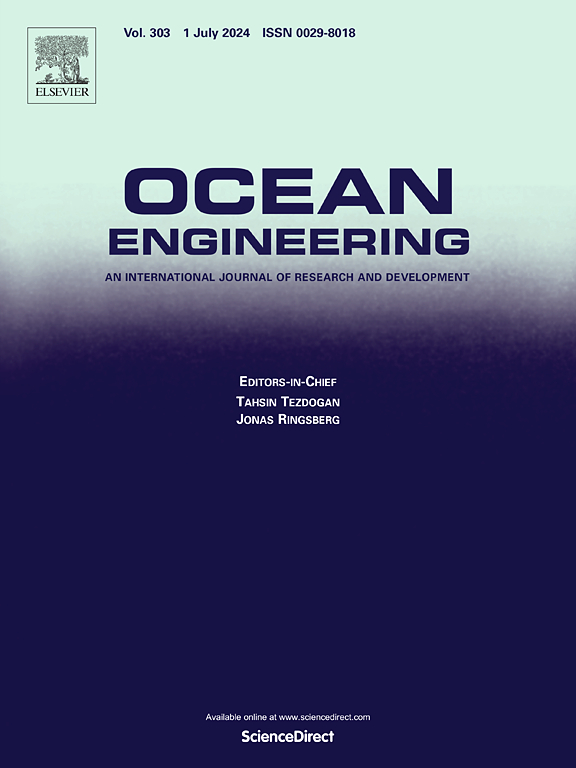Design optimization of inclined pile permeable breakwater based on a CFD-SVR-WO framework
IF 4.6
2区 工程技术
Q1 ENGINEERING, CIVIL
引用次数: 0
Abstract
The design and optimization of breakwaters is a crucial yet challenging problem in port and coastal engineering, as evaluating their wave dissipation characteristics is usually associated with high experimental or computational expenses. To achieve rapid and comprehensive optimization of an inclined pile permeable (IPP) breakwater, this study proposed a surrogate model -based optimization framework integrating computational fluid dynamics (CFD), support vector regression (SVR), and walrus optimizer (WO). Firstly, a three-dimensional numerical wave tank was established to evaluate the wave dissipation capacity of the breakwater. The accuracy of the model was validated through model tests. Then, a surrogate model was trained using SVR based on the data obtained from 103 high-fidelity CFD simulations. The hydrodynamic properties of the IPP breakwater under different wave periods were analyzed, showing that the IPP breakwater has better wave dissipation capability for short-period waves. Finally, an optimized design was given by applying WO under constraints of minimum permeability at 0.22 and maximum volume per unit length at 36 m2. The proposed CFD-SVR-WO framework demonstrated a significant reduction in computational cost, validating its feasibility in handling complex optimizations for engineering structures.
基于CFD-SVR-WO框架的斜桩透水防波堤设计优化
防波堤的设计和优化是港口和海岸工程中一个关键而又具有挑战性的问题,因为评估防波堤的波浪耗散特性通常需要很高的实验或计算费用。为实现斜桩透水防波堤的快速、全面优化,提出了基于代理模型的计算流体力学(CFD)、支持向量回归(SVR)和海象优化器(WO)相结合的优化框架。首先,建立了三维数值波浪槽,对防波堤的消波能力进行了评价。通过模型试验验证了模型的准确性。然后,基于103次高保真CFD模拟数据,采用SVR方法训练代理模型。分析了IPP防波堤在不同波浪周期下的水动力特性,表明IPP防波堤对短周期波浪具有较好的消波能力。最后,在最小渗透率为0.22、单位长度最大容积为36 m2的条件下,应用WO进行了优化设计。提出的CFD-SVR-WO框架显著降低了计算成本,验证了其在处理复杂工程结构优化方面的可行性。
本文章由计算机程序翻译,如有差异,请以英文原文为准。
求助全文
约1分钟内获得全文
求助全文
来源期刊

Ocean Engineering
工程技术-工程:大洋
CiteScore
7.30
自引率
34.00%
发文量
2379
审稿时长
8.1 months
期刊介绍:
Ocean Engineering provides a medium for the publication of original research and development work in the field of ocean engineering. Ocean Engineering seeks papers in the following topics.
 求助内容:
求助内容: 应助结果提醒方式:
应助结果提醒方式:


